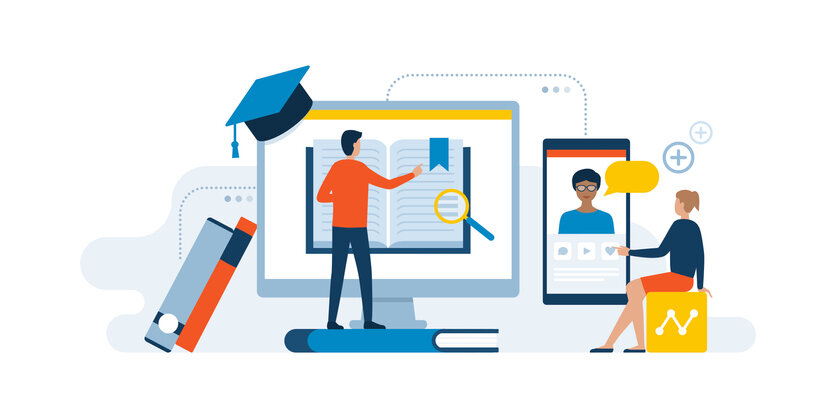The strengthening and advancement of online education cannot happen automatically; it is necessary to consider methodologies.
The use of technology to deliver online education is no longer the response to an emergency; time has passed, and the tech-education alliance has become the new norm. We have entered the second phase that brings challenges to improve the online experience of students and teachers.
We discussed the theoretical, pedagogical, and practical considerations of adapting to online education in previous articles. Both fundamental and peripheral aspects of the new educational normality have been extensively addressed in various texts, for example, how to communicate with students and ensure that they are in a good state of emotional health.
But what about more advanced considerations like course design, assessment methodologies, and the digital gap among the students? Addressing these issues is no longer a task for the future, but rather, it is an urgency of the present. Right now, teachers should be constructing educational programs and assessment tools that are designed for online education from the ground up.
With this in mind, a group of professors led by Albert Sangrà, Chair Professor in studies of Psychology and Education Sciences at the Universitat Oberta de Catalunya (Open University of Catalonia) (UOC), took on the task of condensing a compendium having the necessary sections to guide the next steps in online classes.
>
“It is not a question of teaching the same way we are doing, but digitalizing it. We must adapt teaching to a different context, one that is not face-to-face.”
Sangrà and nine other teachers with 25 years of experience in online education worked together to provide solutions for the principal problems of continuing 100% online education in a book entitled Decalogue for Improving Online Teaching.
The professor emphasized the importance of changing the base structures we usually think of when producing and executing educational programs. “It is not a question of teaching the same way we are doing, but digitalizing it. We must adapt teaching to a different context, one that is not face-to-face,” explains Sangrà, who is also the Director of the UNESCO Chair in Education and Technology for Social Change.
The compendium points to three main areas on which teachers must focus on the transition to better online education.
1. Put yourself in the situation and help students understand it
The first thing to understand for online classes’ continuity is that its present condition is an emergency solution responding to critical problems. We cannot expect recipes or methodologies derived from this to have the results we want automatically in the future. What has been constructed so far in the field of online education has been built on emergencies.
Emergencies are complicated; everyone lives them differently. So, at this moment, we can only expect approximations and recommendations that will give us the foundation for a methodology for new normality.
According to Sangrà and his fellow researchers, the ability to observe and react to the various ways students interact and develop in an online dynamic compared to face-to-face is crucial to establish the class’s discourse and organization. Overcoming social distancing by knowing students in-depth, their behaviors, and their psychological patterns online is also vital to evolve rapidly to the new educational normality.
2. Resource management and generation of strategies
Resources need to be understood differently. One must consider not only resources for content but also the platforms for interaction and communication. Being in a face-to-face space offers the advantage of more defined schedules in terms of time and rest periods.
The spaces in presential education provide both classroom and recreational group environments. Learning at home does not have this benefit. The students’ reduced mobility makes it crucial for them to have flexibility in taking necessary breaks and interacting with other students.
Teachers should approach using resources with a different mindset, more in tune with the needs of online education provided to isolated students. This will allow them to generate relevant strategies to deal with the problems characteristic of this context.
3. Design of activities and assessment
Thinking differently about class activities and assessing them is also a critical step in establishing new rules for global online education.
For Sangrà and his team, the first step is to diversify and consider diverse mechanisms that provide information and help track the student process. More than being a measuring instrument, evaluation should be a formative and continuous experience that allows teachers to focus on the evaluative procedure and make assessments along an axis, rather than considering just data or a result. This facilitates knowing the level of the student’s learning, rather than only grading it.
What pedagogical challenges of content or implementation have you encountered in your experience as a teacher in this context of prolonged isolation? Tell us in the comments.
Translation by Daniel Wetta.
This article from Observatory of the Institute for the Future of Education may be shared under the terms of the license CC BY-NC-SA 4.0 
)
)


)